Collection
Fertility and Social Inequalities in Migrant Populations: a Look at the Roles of Selection, Context of Reception, and Employment
- Submission status
- Closed
This collection looks at fertility differentials and social inequalities across different groupings and across time. It contains twelve empirical papers that deal with both international migrants and internal migrants, both women and men, both older migrant populations spanning several generations as well as recent immigrant groups, such as refugees and include analyses of both behavior and intentions. The collection demonstrates the large heterogeneity in fertility among migrant and ethnic minority groups. Social inequalities shape fertility differentials, which in turn influence subsequent life-courses of migrants and ethnic minority group members.
Editors
-
Alicia Adsera
Alicia is a Senior Research Scholar and Lecturer in Economics at the Princeton School of Public and International Affairs. Some of her work focuses on how differences in local labor market institutions and economic conditions are related to fertility and household formation decisions in the OECD (and Latin America). In addition she is interested in an array of migration topics (i.e. immigrant fertility; the relevance of language, political conditions and welfare provisions among the determinants of migration flows; the wellbeing of child migrants; differential labor market performance of migrants across European countries).
-
Nadja Milewski
Nadja Milewski works at the Institute for Sociology and Demography, University of Rostock, Germany.
Articles (13 in this collection)
-
-
The Interplay Between the Early Work and Family Trajectories of Young Adult Women Born in West Germany: Differences by Parental Origins
Authors
- Cristina Samper Mejia
- Content type: OriginalPaper
- Open Access
- Published: 28 October 2021
- Pages: 345 - 368
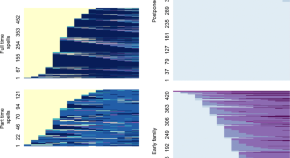
-
Fertility Behavior of Turkish Migrant Men in Europe Compared to Stayers at Origin
Authors
- Nadja Milewski
- Helen Baykara-Krumme
- Content type: OriginalPaper
- Open Access
- Published: 28 August 2021
- Pages: 115 - 136
-
Municipality Characteristics and the Fertility of Refugees in Norway
Authors
- Synøve Andersen
- Alícia Adserà
- Marianne Tønnessen
- Content type: OriginalPaper
- Published: 10 July 2021
- Pages: 165 - 208
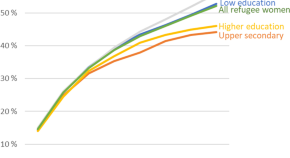
-
Ethnicity and fertility of descendants of rural-to-urban migrants: the case of Daghestan (North Caucasus)
Authors
- Konstantin Kazenin
- Vladimir Kozlov
- Content type: OriginalPaper
- Published: 25 June 2021
- Pages: 69 - 93
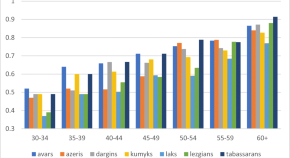
-
Fertility Differences Between Migrants and Stayers in a Polygamous Context: Evidence from Senegal
Authors
- Elisabeth K. Kraus
- Amparo González-Ferrer
- Content type: OriginalPaper
- Open Access
- Published: 28 April 2021
- Pages: 137 - 164

-
Neighbourhoods and Workplaces: Are They Related to the Fertility of Immigrants and Their Descendants? A Register-Based Study of Finland, 1999–2014
Authors
- Allan Puur
- Leen Rahnu
- Tiit Tammaru
- Content type: OriginalPaper
- Open Access
- Published: 02 February 2021
- Pages: 209 - 231
-
Path-Dependencies in Employment Trajectories Around Motherhood: Comparing Native Versus Second-Generation Migrant Women in Belgium
Authors
- Julie Maes
- Jonas Wood
- Karel Neels
- Content type: OriginalPaper
- Open Access
- Published: 25 January 2021
- Pages: 281 - 344

-
Fertility Intentions Within a 3-Year Time Frame: a Comparison Between Migrant and Native Italian Women
Authors (first, second and last of 4)
- Eleonora Mussino
- Giuseppe Gabrielli
- Salvatore Strozza
- Content type: OriginalPaper
- Open Access
- Published: 04 January 2021
- Pages: 233 - 260
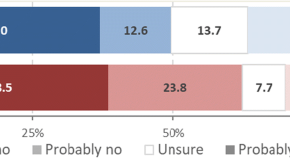
-
Family Formation: an Intergenerational Comparison Subtitlte: The Relevance of Social Inequalities for Family Formation in a Transnational Migration Context
Authors
- Eveline Ammann Dula
- Content type: OriginalPaper
- Open Access
- Published: 25 August 2020
- Pages: 95 - 113

-
Recent Trends in Immigrant Fertility in Australia
Authors
- Bernard Baffour
- James Raymer
- Ann Evans
- Content type: OriginalPaper
- Published: 15 August 2020
- Pages: 47 - 67
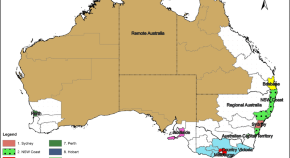
-
Visualising Immigrant Fertility -- Profiles of Childbearing and their Implications for Migration Research
Authors
- Marianne Tønnessen
- Ben Wilson
- Content type: OriginalPaper
- Open Access
- Published: 14 July 2020
- Pages: 23 - 46
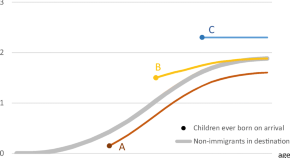
-
Is Ethnic Retention a Result of Unmet Educational Aspirations? Academic Career and Ethnic Identity of Migrant Minority Youth in England, Germany, the Netherlands, and Sweden
Authors
- Bernhard Nauck
- Content type: OriginalPaper
- Open Access
- Published: 30 June 2020
- Pages: 261 - 280


